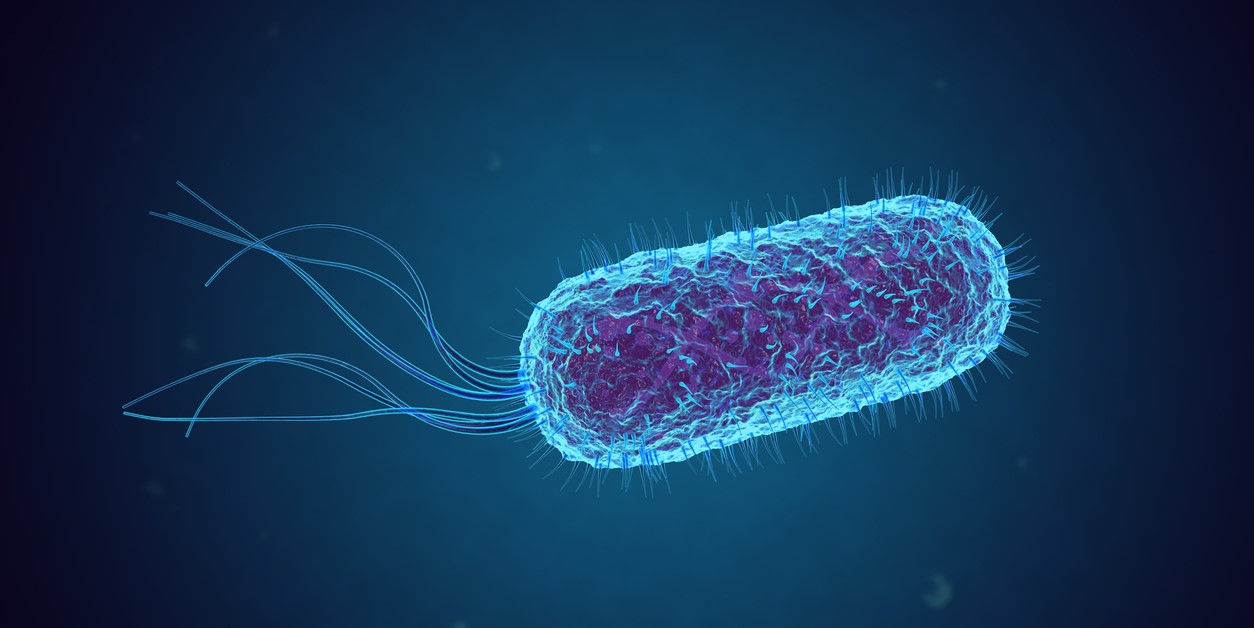E. coli mastitis in dairy herds: A bigger problem than you might think
For some farms, as many as 40-50% of all mastitis cases can be due to E. coli or other gram-negative bacteria. Often farm teams are surprised at finding this when they begin on-farm testing of clinical mastitis samples.
Gram-negative bacteria, such as E. coli, have a complex cell wall structure that includes an outer membrane which acts as a protective barrier. The presence of this protective barrier means that they are often non-responsive to antibiotic treatment, making identification of the problem, prevention, and having specific treatment protocols important.
Preventing infection:
Understanding that there is an issue with E. coli or other gram-negative bacteria on the farm and any seasonal patterns of its emergence is important, as this enables the producer to put in place specific, tailored preventative strategies.
E. coli is an environmental pathogen, meaning infection is typically picked up from an animals environment, most commonly spread in muck. Because of the tough outer membrane, gram-negative bacteria such as E. coli can survive in diverse environments such as on pasture, in bedding, and on surfaces in the milking shed.
Keeping the environment clean is therefore an important way to reduce E.coli risk within the herd. This can include a wide range of preventative actions, such as improved grazing strategies, maintenance of cow tracks, increased frequency of bedding down, scraping, reviewing stocking densities, building design, bedding design and cow comfort. In addition, farms should have clear hygiene protocols in the milking parlour such as the use of clean gloves, and cleaning teats before milking cups are applied.
Identifying the causative bacteria for each case:
Cows with mastitis are usually identified when they are presented with swollen udders and changes in milk characteristics. Having data to support the treatment plan for each mastitis case ensures you always have the most appropriate treatment strategy.
Experts may be able to make inferences from the appearance of the milk, and clinical signs in the cow, as to whether a case is caused by E. coli. However the gold-standard approach is to test a milk sample to confirm what pathogen is causing the infection. A variety of on-farm diagnostics (such as Mastatest) are available, or you can use in-clinic testing services.
Management of gram-negative mastitis cases:
Gram-negative infections are generally short-lived, and often self limiting. Most experts now agree that cows with a confirmed mild-to-moderate gram-negative infection usually do not benefit from antibiotic treatment. Longitudinal data collected by Mastaplex strongly supports this – with close to 100% of samples that test as E. coli or other gram-negative bacteria showing a low likelihood of responding to common antibiotics such as benzylpenicillin, cloxacillin and cephalexin.
When clinical mastitis samples are tested using Mastatest, the farm team will receive via email within 24hrs the bacterial identification report, information on antibiotic sensitivity, and a vet-recommended treatment protocol.
Instead of antibiotic treatment, the cow is generally isolated from the herd, monitored regularly, and the udder regularly stripped until she has recovered. Fluid therapy is an essential part of E. Coli case treatment protocols (oral, or IV for cows that are sick and significantly dehydrated), and Non steroidal anti-inflammatories (NSAIDS) are also indicated. The veterinarian can include specific treatment plan advice such as this within the Mastatest results and treatment protocol. Farm teams should consult a veterinarian if unsure of the best course of action, and always if the cow is acutely unwell with a severe infection.
By avoiding antibiotic treatment, you can not only save the direct cost of that treatment, but also avoid the need to withhold milk for an extended period – a win-win for productivity and cost-reduction.
Summary:
Test Clinical Mastitis Cases: Use on-farm or in-clinic testing to identify specific pathogens like E. coli.
Focus on Prevention: Implement tailored environmental management practices—such as frequent bedding changes, grazing strategies, and strict milking hygiene.
Isolate and Monitor Infected Cows: For confirmed mild-to-moderate E. coli mastitis infections, isolate and monitor the cows. Whilst antibiotics are probably not needed, fluid therapy is important and NSAIDs are also indicated.
If in doubt, consult Your Veterinarian: For severe cases, or if unsure of the treatment approach, seek veterinary support to ensure effective and appropriate care.

